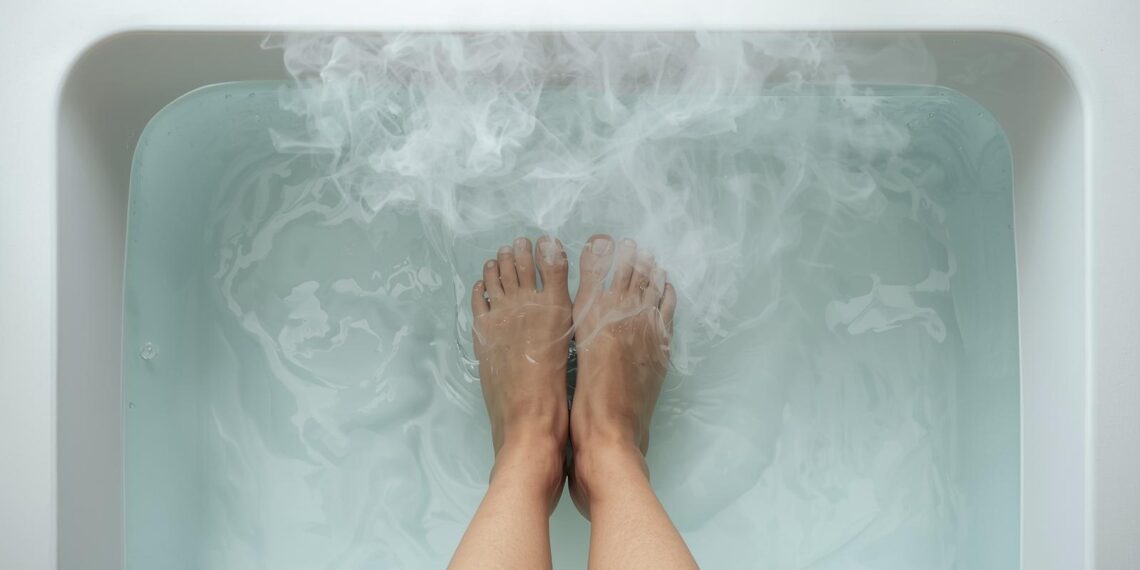In the ever-evolving world of wellness, detoxification methods have captivated the interest of those seeking holistic health solutions. Among these methods, the ionic foot spa detox has emerged as a popular choice. This technique, lauded for its purported ability to cleanse the body of toxins, has sparked curiosity and debate alike. But how exactly does it work?
The ionic foot cleanse, also known as a detox foot bath, is a process designed to draw impurities from the body through the feet. It operates on the principle of electrolysis, where water is ionized to create a positive and negative ionic field. This field is believed to attract and neutralize toxins, heavy metals, and other impurities in the body. But what happens during this process?
The detox begins when an individual immerses their feet into a basin filled with warm water. An array, which is a set of electrodes, is then placed in the water to start the ionization process. The array sends a low voltage electric current through the water, splitting the water molecules into positive hydrogen ions and negative hydroxide ions.
These ions purportedly draw out toxins through the skin of the feet. Advocates of the detox foot bath claim that this process can help balance the body’s natural energy field, promote relaxation, and enhance overall well-being.
A typical ionic foot spa session lasts about 30 to 60 minutes. As the session progresses, the water may change color, turning brown, orange, or even black. This color change is often cited by practitioners as evidence of toxins being removed from the body.
However, it’s important to approach these claims with a degree of skepticism. Studies have suggested that the discoloration in the water may result from the natural oxidation of metal in the array or the presence of impurities in the water itself, rather than toxins extracted from the body.
The growing popularity of detox practices like the ionic foot spa reflects broader cultural and economic trends in the wellness industry. As consumers increasingly prioritize health and well-being, the demand for innovative detox solutions continues to rise.
The wellness industry has evolved from a niche market to a mainstream cultural phenomenon. With the rise of social media and influencer culture, wellness trends are quickly disseminated and adopted by a global audience. This rapid spread of information has contributed to the popularity of detox practices, as consumers seek quick and accessible solutions to improve their health.
The economic impact of the wellness trend is significant. The global wellness economy is valued at trillions of dollars, with detox products and services comprising a substantial portion of the market. Entrepreneurs and businesses in the wellness sector are constantly innovating to meet consumer demand, leading to the development of new products and services like the ionic foot spa.
For wellness product developers, understanding these trends is crucial for creating products that resonate with consumers. By tapping into the cultural and economic dynamics of wellness, developers can design products that are not only effective but also align with contemporary lifestyle trends.
While the ionic foot spa detox is embraced by many, it’s essential to critically evaluate its benefits and limitations. Although anecdotal evidence suggests that users experience a sense of relaxation and well-being, scientific research on the efficacy of detox foot baths remains limited.
Proponents of the ionic foot cleanse claim that it offers several benefits, including:
- Improved energy levels
- Enhanced mood and relaxation
- Reduced stress and anxiety
- Support for the body’s natural detoxification processes
However, it’s important to note that the scientific community has not reached a consensus on the effectiveness of ionic foot spas. Some researchers argue that the detoxifying effects may be more psychological than physiological.
Before trying an ionic foot spa detox, individuals should consult with healthcare professionals, particularly if they have underlying health conditions or are pregnant. Ensuring that the detox method aligns with one’s health needs and goals is paramount.
As the wellness industry continues to evolve, so too will detox practices. The future of detoxification may involve the integration of advanced technologies and a deeper understanding of the body’s complex systems.
Emerging technologies such as wearable health devices and personalized wellness solutions hold the potential to revolutionize detox practices. By providing real-time data and insights, these innovations could offer more targeted and effective detoxification methods.
Ultimately, the future of detox practices lies in embracing a holistic approach to health and well-being. This means considering not only physical detoxification but also mental, emotional, and spiritual well-being. By fostering a comprehensive view of health, individuals can achieve a more balanced and fulfilling life.
The ionic foot spa detox exemplifies the intersection of wellness, culture, and consumer behavior. While its effectiveness may be debated, its popularity underscores the growing demand for accessible and innovative detox solutions. By staying informed about wellness trends and critically evaluating their benefits, individuals can make empowered choices that enhance their well-being.
Whether you’re a wellness product developer, lifestyle magazine editor, or health and wellness coach, understanding the dynamics of detox practices can provide valuable insights into the ever-changing landscape of wellness. As we navigate the future of health and well-being, the key lies in balancing innovation with evidence-based practices, ensuring that wellness remains a source of empowerment and transformation for all.




